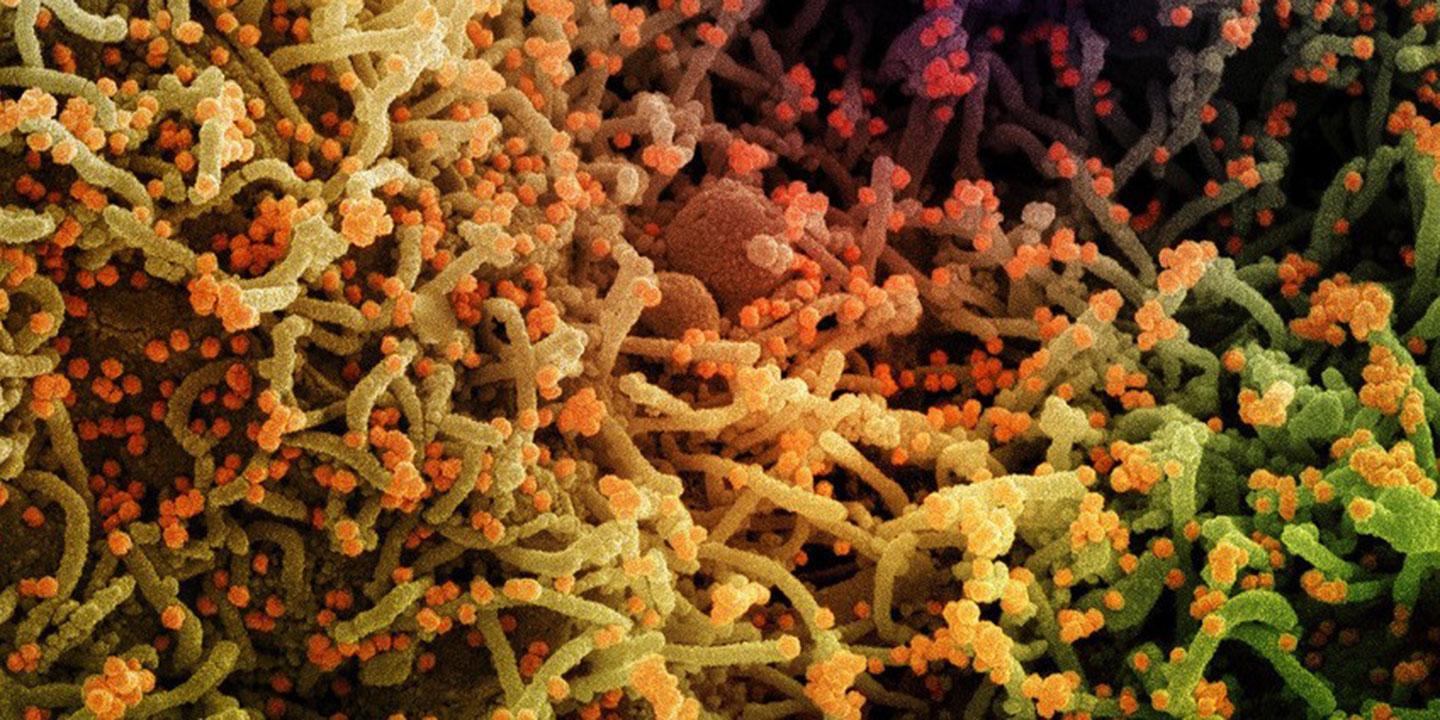STING inhibitors for SARS-CoV2 immunopathology

SARS-CoV2 infection can lead to pulmonary and systemic viral spread with delayed detrimental hyperinflammatory responses of unknown origin. This project investigated these responses and tested the efficacy of STING inhibitors to treat detrimental outcomes of SARS-CoV2 infections in pre-clinical models.
Background
Covid-19, induced by SARS-Cov2 infection, can manifest with detrimental lung pathology and extra-pulmonary complications. Type I interferons (IFNs) have been recognized to play a central role in the immune-pathogenesis of Covid-19. Rapid induction of type I IFNs in the early phase of the infection can limit virus propagation, whereas sustained increase of type I IFN levels in the late phase of the infection is associated with hyperinflammation and poor disease outcomes. However, the mechanism that drive late type I IFNs and detrimental hyperinflammation were not understood.
Aim
We first focused our attention to Covid-19 skin manifestations associated with moderate to severe disease. The profiling uncovered a type I IFN signature, which was primarily mediated by macrophages adjacent to areas of endothelial cell damage. There is another common skin manifestation: the chilblains, also called Covid-toes. Chilblains were observed mostly in patients who were asymptomatic and showed negative results from SARS-CoV-2 tests. We therefore hypothesized that Covid-toes patients are predisposed to mount a robust innate immunity against the virus.
Results
Macrophages were found to engulf dying endothelial cells and to sense the self-DNA in the cytosolic compartment cyclic GMP- AMP synthase (cGAS)–stimulator of interferon genes (STING) pathway, which controls immunity to cytosolic DNA. Activation of the cGAS-STING pathway led to the production of type I IFNs by macrophages. Thus, the cGAS-STING pathway is a critical driver of the late pathogenic type I IFN response in Covid-19 skin lesions associated with moderate to severe disease.
A lung-on-chip model revealed that infection with SARS-CoV-2 activated cGAS–STING signaling in endothelial cells by inducing mitochondrial damage and DNA release and the subsequent endothelial cells death triggered type I IFN responses in macrophages also through cGAS-STING activation. In mice, pharmacological inhibition of STING reduced lung inflammation induced by SARS-CoV-2 and improved disease outcome. Collectively, our study established a mechanistic basis of pathological type I IFN responses in Covid-19 via an intrinsic and extrinsic activation of cGAS-STING.
By profiling skin lesions in the early stage following chilblain onset, we uncover a transient IRF7-dependent type I interferon (IFN) signature that is driven by the acral infiltration of systemically activated plasmacytoid dendritic cells (pDCs).
Patients' peripheral blood mononuclear cells (PBMCs) demonstrate increased production of IFNα when exposed to SARS-CoV-2 and influenza A, but not herpes simplex virus 1, indicating a heightened ability to detect RNA - but not DNA - viruses. Further investigations revealed enhanced responsiveness of pDCs in chilblain patients to the RNA sensor TLR7, but not the DNA sensor TLR9.
Our study established a two-step model for the immunopathology of SARS-CoV-2-related chilblains: enhanced TLR7 immunity in pDCs, likely triggered by SARS-CoV-2 exposure at the mucosal site, leads to prompt viral clearance, which explains the lack of infection markers in most cases. Subsequently, systemic spread of activated pDCs and infiltration of the toes, probably caused by acral coldness, results in IFN- mediated tissue damage, clinically manifesting as chilblains.
Specific contribution to tackle the current pandemic
There is still a lack of fundamental knowledge of the mechanisms driving detrimental inflammatory responses in SARS-CoV2 infections. By combining clinical and fundamental research, this project could define the role of innate DNA immunity in SARS-CoV2 pathology and provide innovative new therapeutic targets. The clinical development of STING inhibitors is pursued by several world-leading pharmaceutical companies for the treatment of STING associated vasculopathy with onset in infancy. The proposed studies therefore have the potential to rapidly move from bench to clinical use and potentially change the outcomes of patients with severe SARS-CoV2 pathology.
Original title
cGAS-STING-mediated self-DNA sensing in COVID-19 immunopathology
